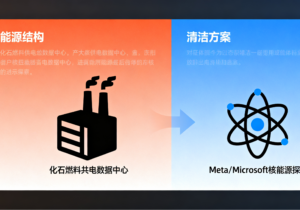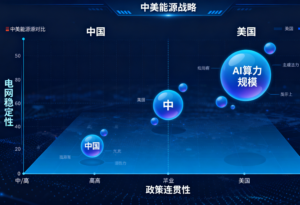
The rapid expansion of artificial intelligence (AI) is driving a surge in global electricity demand, with the United States at the center of a growing challenge: powering the data centers and infrastructure that enable AI’s advancement. As AI models grow larger and more complex, their hunger for energy has sparked a race to secure reliable, scalable power—raising questions about sustainability, grid capacity, and international competition.
The Growing Energy Appetite of AI
Data centers, the backbone of AI operations, already consume a significant share of U.S. electricity. According to an analysis from Berkeley Lab, these facilities currently account for about 4.4% of all U.S. electricity use. This figure is projected to rise sharply as AI’s footprint expands: by 2028, over half of data center energy consumption could be attributed to AI alone, equivalent to the power needed to run 22% of all U.S. households.
A key concern lies in the source of this energy. A report from MIT Technology Review notes that most data centers rely on grids dominated by fossil fuels, resulting in carbon emissions 48% higher than the national average. Even as AI optimizes energy use in manufacturing—for example, by regulating power consumption in precision equipment like Automatic Circlip Feeding Systems to minimize waste—its own infrastructure remains heavily dependent on non-renewable sources. While tech giants like Meta and Microsoft are exploring nuclear power as a low-carbon alternative, natural gas remains the primary energy source for now.
U.S. Responses to the Energy Crunch
Facing this rising demand, the U.S. government has taken steps to address potential shortages. In April, President Donald Trump signed an executive order directing the Department of Energy to fast-track emergency approvals for power plants, allowing them to operate at full capacity during peak demand periods. The order also mandates the development of a standardized method to assess grid reserve margins and identify critical power plants essential for maintaining reliability.

Global Competition and Long-Term Challenges
Despite these measures, doubts persist about the U.S.’s ability to meet AI’s 24/7 power needs—especially as China advances coordinated plans to ensure stable electricity for its data centers. As noted in reporting from Forbes, “the U.S. does not have a coherent and continuing energy plan of any type. China’s central planning allows for development and sustainability, while the U.S. approach to energy changes every four years.”
This disparity highlights a critical reality: the race to lead in AI is as much about energy infrastructure as it is about technological innovation. For the U.S. to maintain its edge, bridging the gap between AI’s growing energy demands and a sustainable, reliable power grid will be essential.
In the end, powering AI is not just a technical challenge—it is a test of long-term planning, policy consistency, and global competitiveness. How nations rise to meet it will shape the future of artificial intelligence and the planet’s energy landscape.




















